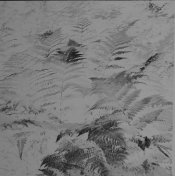dancluff
Member
Hello,
I still have much to learn in developing film. The other day I developed some Delta 100 in HC-110. I developed for 5:40 minutes and I tried using minimal agitation because the scenes were high contrast scenes. When metering the scenes I used a handheld light meter and metered the shadows. I then adjusted my shutter speeds to place the shadows one to two stops underexposed. I believe my light meter is reading accurately (it gives me 1/iso at f16 on a bright sunny day at noon). The questions I have are do these negatives look like they were properly developed but underexposed? Without sufficient agitation can I lose density in the midtones and end up with a thin negative? For a high contrast scene (dappled light in a forest what would be the best way to properly expose and develop the negatives? As a side note I have not fully ruled out inaccurate shutter speeds based on a few other negatives. I will have to start writing down all this information, it is too hard to remember after the fact!
Thanks for ant thoughts you may have
Dan
I still have much to learn in developing film. The other day I developed some Delta 100 in HC-110. I developed for 5:40 minutes and I tried using minimal agitation because the scenes were high contrast scenes. When metering the scenes I used a handheld light meter and metered the shadows. I then adjusted my shutter speeds to place the shadows one to two stops underexposed. I believe my light meter is reading accurately (it gives me 1/iso at f16 on a bright sunny day at noon). The questions I have are do these negatives look like they were properly developed but underexposed? Without sufficient agitation can I lose density in the midtones and end up with a thin negative? For a high contrast scene (dappled light in a forest what would be the best way to properly expose and develop the negatives? As a side note I have not fully ruled out inaccurate shutter speeds based on a few other negatives. I will have to start writing down all this information, it is too hard to remember after the fact!
Thanks for ant thoughts you may have
Dan













